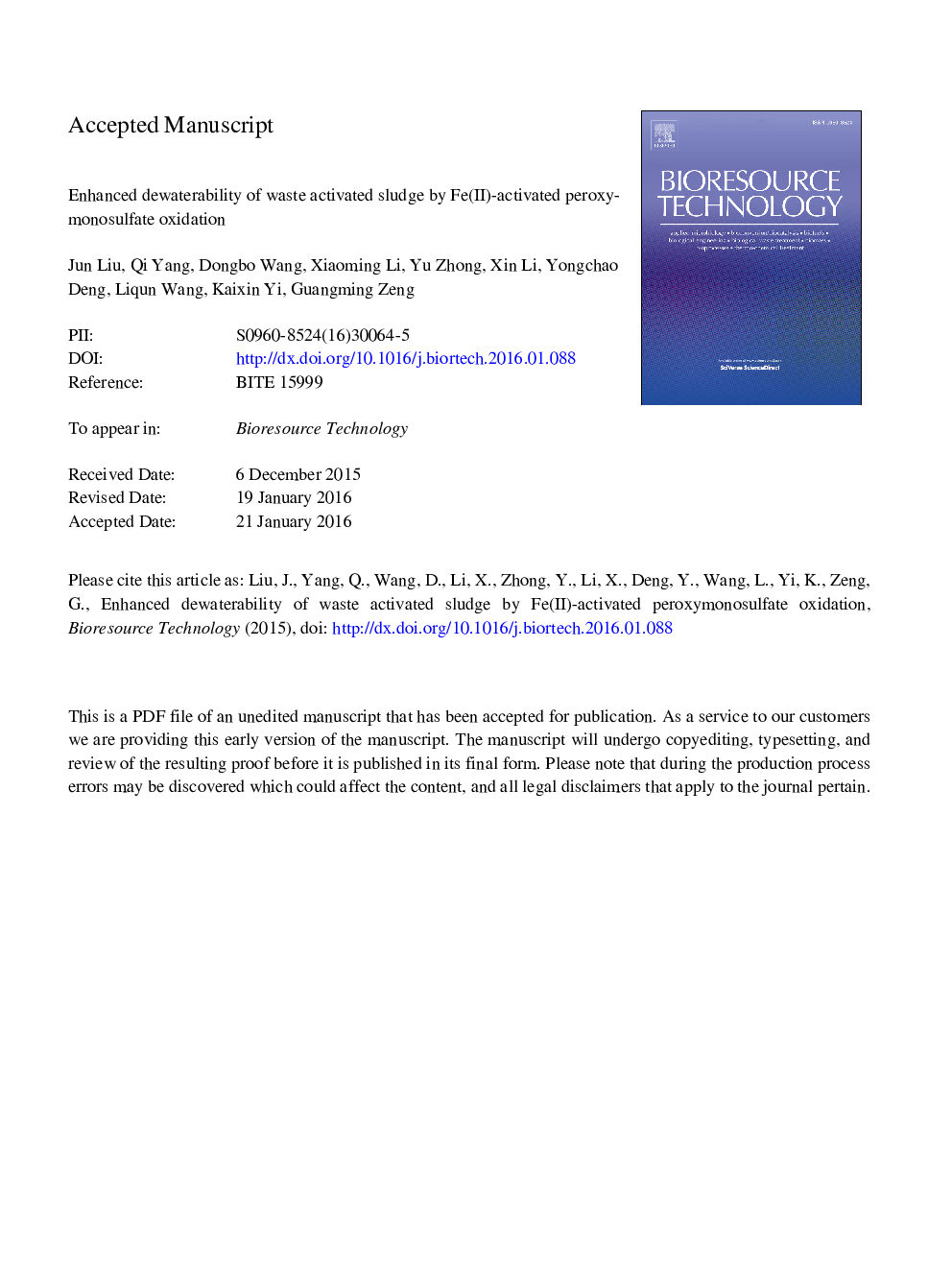| Article ID | Journal | Published Year | Pages | File Type |
|---|---|---|---|---|
| 7072152 | Bioresource Technology | 2016 | 29 Pages |
Abstract
The effect of Fe(II)-activated peroxymonosulfate (Fe(II)-PMS) oxidation on the waste activated sludge (WAS) dewatering and its mechanisms were investigated in this study. The capillary suction time (CST), specific resistance to filterability (SRF) of sludge and water content (WC) of dewatered sludge cake were chosen as the main parameters to evaluate the sludge dewaterability. Experimental results showed that Fe(II)-PMS effectively disintegrated sludge and improved sludge dewaterability. High CST and SRF reduction (90% and 97%) was achieved at the optimal conditions of PMS (HSO5-) 0.9Â mmol/gVSS, Fe(II) 0.81Â mmol/gVSS, and pH 6.8. Extracellular polymeric substances (EPS) and three-dimensional excitation-emission matrix (3D-EEM) fluorescence spectroscopy before and after Fe(II)-PMS oxidation were determined to explain the enhanced dewatering mechanism. The release of EPS-bound water induced by the destruction of EPS was the primary reason for the improvement of sludge dewaterability during Fe(II)-PMS oxidation.
Keywords
Related Topics
Physical Sciences and Engineering
Chemical Engineering
Process Chemistry and Technology
Authors
Jun Liu, Qi Yang, Dongbo Wang, Xiaoming Li, Yu Zhong, Xin Li, Yongchao Deng, Liqun Wang, Kaixin Yi, Guangming Zeng,
